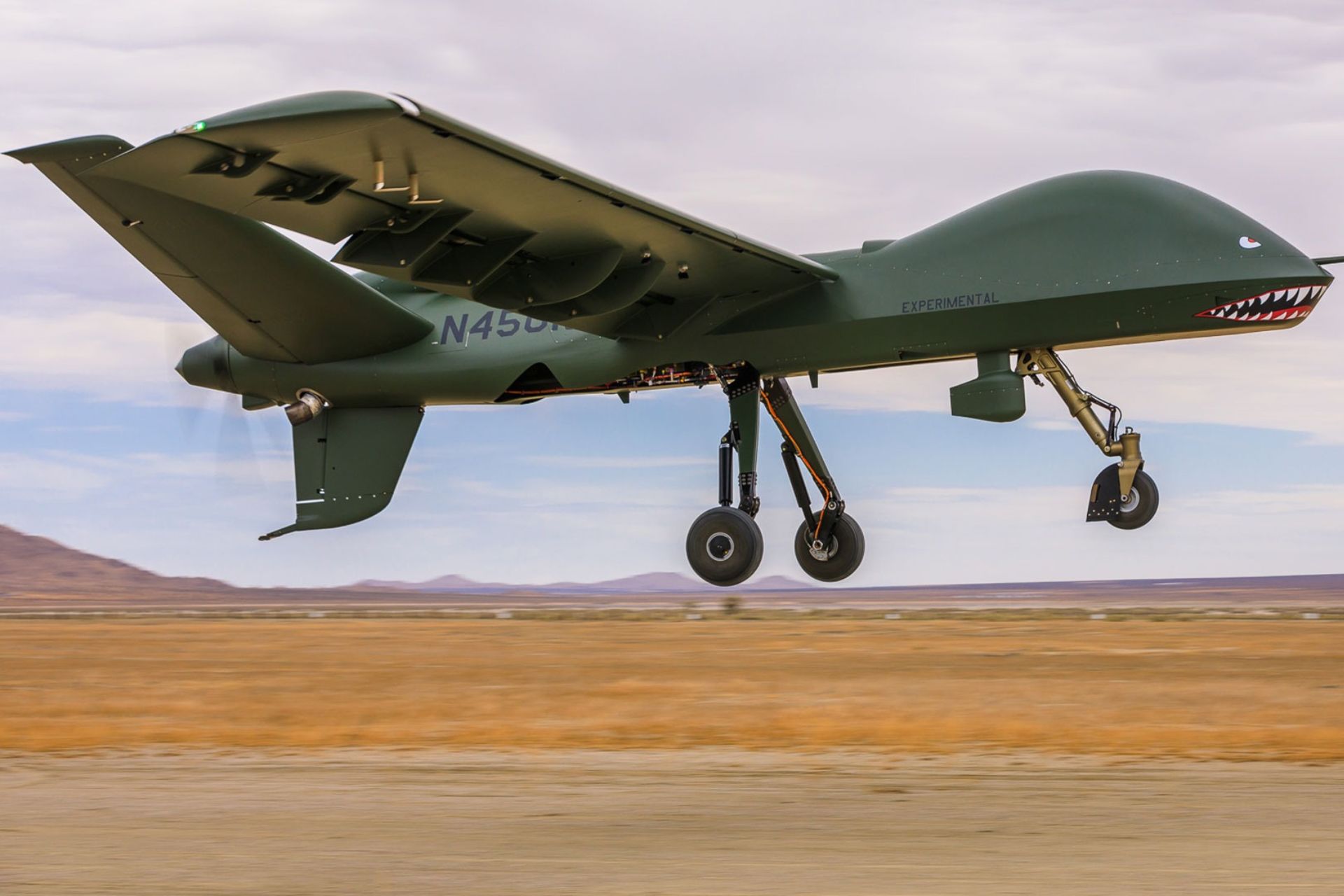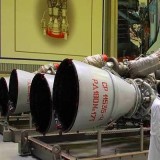US and South Korea Partner on Autonomous Drone Programs to Redefine Combat Operations

{loadposition bannertop}
{loadposition sidebarpub}
The growing number of partnerships between South Korean and American defense companies in the field of autonomous military drones marks a strategic shift in the evolution of defense capabilities. In response to the growing importance of unmanned systems and the accelerated integration of artificial intelligence into military operations, these agreements aim to address South Korea’s technological shortfalls while responding to strong global demand. In April 2025 alone, five strategic agreements were announced between major players from both countries, such as Hanwha Aerospace’s collaboration with General Atomics to develop the Grey Eagle STOL drone, reflecting a shared commitment to developing air and naval autonomous systems for military use. Although most of these projects remain at an early stage, their potential impact could significantly reshape the balance of power in the global defense autonomy landscape.
Follow Army Recognition on Google News at this link
Hanwha, South Korea’s leading defense company, announced an investment to jointly develop the Grey Eagle STOL, a short takeoff and landing tactical drone from GA-ASI (Picture source: GA-ASI)
Among the most notable agreements is the one between Hanwha Aerospace and General Atomics Aeronautical Systems (GA-ASI). Hanwha, South Korea’s leading defense company, announced an investment of 750 billion won (approximately $524 million) to jointly develop the Grey Eagle STOL, a short takeoff and landing tactical drone. This marks Hanwha’s first formal engagement in a bilateral drone development program, although the company has prior experience in manufacturing drone components. GA-ASI, known for platforms such as the MQ-9 Reaper, brings its software and operational expertise to a partnership focused on the international market.
Meanwhile, U.S.-based Anduril Industries, specializing in autonomous systems and AI for defense applications, has strengthened its presence in South Korea through multiple agreements. The company signed a memorandum of understanding with Korean Air’s aerospace division to co-develop autonomous aerial vehicles primarily for export. Anduril also concluded a preliminary agreement with the Defense Acquisition Program Administration (DAPA), the South Korean agency responsible for military procurement, to launch a joint R&D program focused on next-generation combat drones. This includes both hardware components and software architecture for command and control. On April 3, Anduril formalized a partnership with LIG Nex1 to integrate its AI-based software, Lattice, into new-generation guided weapons. A separate collaboration with HD Hyundai is also underway to develop autonomous naval platforms.
For the United States, these collaborations serve dual strategic interests. They allow American firms to access South Korea’s dynamic defense market and strengthen their technological footprint in East Asia—a region at the heart of geopolitical rivalries with China. By transferring key technologies in the form of software, U.S. companies maintain strategic leverage through licensing and ensure future interoperability with U.S. defense systems.
From the South Korean perspective, these partnerships address urgent operational needs. Facing a steady decline in military manpower due to demographic trends, and ongoing threats from North Korea’s ballistic and potentially autonomous weapons capabilities, South Korea is prioritizing the rapid integration of advanced technological solutions into its armed forces. The creation of the Drone Operations Command in 2023 represented a key institutional step, yet the modernization of capabilities remains dependent on access to advanced software and AI technologies. According to Professor Park Jeong-soo from Kyungwoon University—formerly with Korea Aerospace Industries—South Korea still lags in AI development, despite being close to U.S. standards in terms of hardware engineering. He estimates that Korean firms have reached about 70% of the software level of major U.S. UAV developers, but are constrained by limited operational testing environments and insufficient machine-learning data.
Alongside domestic considerations, South Korea views these partnerships as a means to enhance its competitiveness in the defense export market. Building on its success with the K9 self-propelled howitzer and naval platforms, the country now aims to establish itself as a leading supplier of autonomous systems, particularly for countries seeking cost-effective alternatives to U.S. solutions. By co-developing systems compatible with NATO standards and tailored to broader operational needs, South Korea positions itself as a pivotal player in shaping the future defense industry.
Ultimately, the convergence of strategic, industrial, and geopolitical interests between South Korea and the United States in the domain of autonomous drones reflects a shared intention to anticipate the evolution of future conflicts. For Seoul, it is a lever for military modernization and international positioning. For Washington, it represents a way to anchor technological influence in a key region while expanding industrial value chains globally. Together, the two allies are laying the foundations of a new high-tech defense ecosystem centered on autonomy and artificial intelligence.

{loadposition bannertop}
{loadposition sidebarpub}
The growing number of partnerships between South Korean and American defense companies in the field of autonomous military drones marks a strategic shift in the evolution of defense capabilities. In response to the growing importance of unmanned systems and the accelerated integration of artificial intelligence into military operations, these agreements aim to address South Korea’s technological shortfalls while responding to strong global demand. In April 2025 alone, five strategic agreements were announced between major players from both countries, such as Hanwha Aerospace’s collaboration with General Atomics to develop the Grey Eagle STOL drone, reflecting a shared commitment to developing air and naval autonomous systems for military use. Although most of these projects remain at an early stage, their potential impact could significantly reshape the balance of power in the global defense autonomy landscape.
Hanwha, South Korea’s leading defense company, announced an investment to jointly develop the Grey Eagle STOL, a short takeoff and landing tactical drone from GA-ASI (Picture source: GA-ASI)
Among the most notable agreements is the one between Hanwha Aerospace and General Atomics Aeronautical Systems (GA-ASI). Hanwha, South Korea’s leading defense company, announced an investment of 750 billion won (approximately $524 million) to jointly develop the Grey Eagle STOL, a short takeoff and landing tactical drone. This marks Hanwha’s first formal engagement in a bilateral drone development program, although the company has prior experience in manufacturing drone components. GA-ASI, known for platforms such as the MQ-9 Reaper, brings its software and operational expertise to a partnership focused on the international market.
Meanwhile, U.S.-based Anduril Industries, specializing in autonomous systems and AI for defense applications, has strengthened its presence in South Korea through multiple agreements. The company signed a memorandum of understanding with Korean Air’s aerospace division to co-develop autonomous aerial vehicles primarily for export. Anduril also concluded a preliminary agreement with the Defense Acquisition Program Administration (DAPA), the South Korean agency responsible for military procurement, to launch a joint R&D program focused on next-generation combat drones. This includes both hardware components and software architecture for command and control. On April 3, Anduril formalized a partnership with LIG Nex1 to integrate its AI-based software, Lattice, into new-generation guided weapons. A separate collaboration with HD Hyundai is also underway to develop autonomous naval platforms.
For the United States, these collaborations serve dual strategic interests. They allow American firms to access South Korea’s dynamic defense market and strengthen their technological footprint in East Asia—a region at the heart of geopolitical rivalries with China. By transferring key technologies in the form of software, U.S. companies maintain strategic leverage through licensing and ensure future interoperability with U.S. defense systems.
From the South Korean perspective, these partnerships address urgent operational needs. Facing a steady decline in military manpower due to demographic trends, and ongoing threats from North Korea’s ballistic and potentially autonomous weapons capabilities, South Korea is prioritizing the rapid integration of advanced technological solutions into its armed forces. The creation of the Drone Operations Command in 2023 represented a key institutional step, yet the modernization of capabilities remains dependent on access to advanced software and AI technologies. According to Professor Park Jeong-soo from Kyungwoon University—formerly with Korea Aerospace Industries—South Korea still lags in AI development, despite being close to U.S. standards in terms of hardware engineering. He estimates that Korean firms have reached about 70% of the software level of major U.S. UAV developers, but are constrained by limited operational testing environments and insufficient machine-learning data.
Alongside domestic considerations, South Korea views these partnerships as a means to enhance its competitiveness in the defense export market. Building on its success with the K9 self-propelled howitzer and naval platforms, the country now aims to establish itself as a leading supplier of autonomous systems, particularly for countries seeking cost-effective alternatives to U.S. solutions. By co-developing systems compatible with NATO standards and tailored to broader operational needs, South Korea positions itself as a pivotal player in shaping the future defense industry.
Ultimately, the convergence of strategic, industrial, and geopolitical interests between South Korea and the United States in the domain of autonomous drones reflects a shared intention to anticipate the evolution of future conflicts. For Seoul, it is a lever for military modernization and international positioning. For Washington, it represents a way to anchor technological influence in a key region while expanding industrial value chains globally. Together, the two allies are laying the foundations of a new high-tech defense ecosystem centered on autonomy and artificial intelligence.




